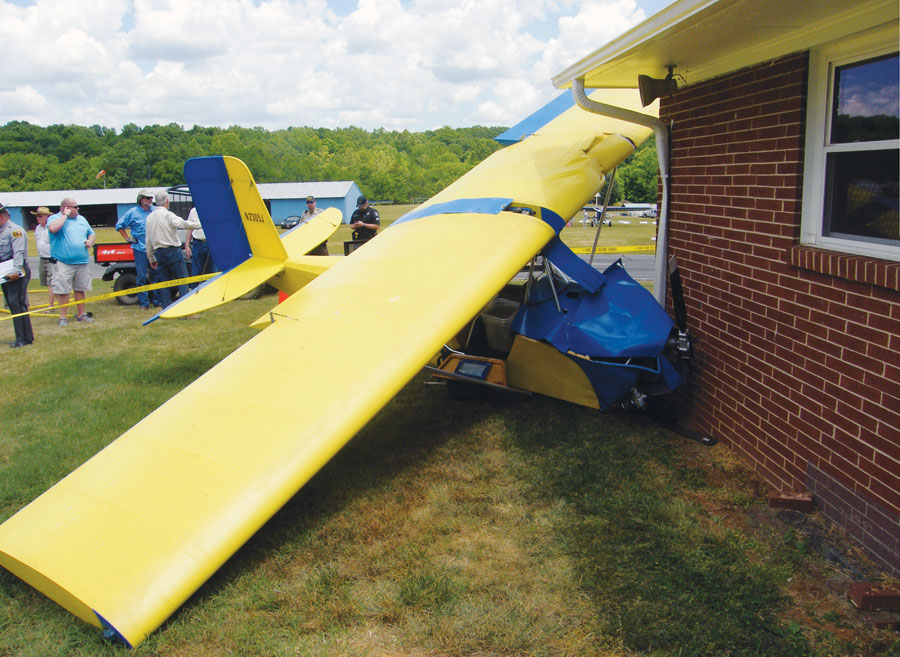
This RagWing was hit by a gust of wind during takeoff. (Photo: FAA via the National Transportation Safety Board)
Ask any pilot—not just readers of this series in KITPLANES—what the main cause of accidents is, and they’ll give the right answer: “pilot error.”
The term is handy shorthand for pilots’ mistakes—and many pilots don’t think it’ll ever apply to them. Of the nearly 4000 homebuilt accidents covered by my accident database (1998-2016), over half were due to some mistake by the pilot. The same mistakes happen over and over again. Most probably believed they wouldn’t make that sort of mistake.
Don’t let you be one of them. Let’s delve into pilot error a little more closely and see what lessons can be found.
Two Flavors
In my analysis, there are two basic “flavors” of pilot error: pilot miscontrol and pilot judgment.

Figure 1: Pilot error, combining miscontrol and judgment issues, accounts for over half of homebuilt accidents.
Pilot miscontrol involves mistakes made in the physical control of the aircraft. It includes things like inadvertent stalls, over- or undershoots, landing with the gear up, etc. These are mostly accidents related to training and flying instincts.
Pilot judgment involves bad decisions not directly related to stick-and-rudder skills. It’s a separate category in my analysis and will be addressed in a later part of this series.
About 38% of all homebuilt accidents involve pilot miscontrol. These are cases where the pilot’s manipulation of the controls of a perfectly healthy aircraft directly led to the accident. They don’t include instances where mechanical factors were an issue. The NTSB, in many cases, attributes the probable cause to pilot error in cases where the pilot botched an emergency landing. My analysis includes only those instances where the pilots’ miscontrol is the direct, immediate start of the accident chain.
For my analysis, I’ve broken down pilot miscontrol into seven subcategories: inadvertent stalls, failure to adequately compensate for wind conditions, loss of directional control (on either takeoff or landing), misjudged approaches, bad landing flare and/or bouncing, and mismanaging the aircraft’s systems.
As Figure 2 shows, three of these subcategories each factor into roughly a quarter of pilot miscontrol accidents—between 22% and 29% for loss of directional control, stalls, and the wind. Problems with runway contact (bounced landing, bad flare) account for another 14%, while system mismanagement (such as forgetting to put the gear down) and misjudging the approach path (undershoot/overshoot) are another ~7% each.
Of course, these subcategories are not exclusive—several factors could be involved in each accident.
Loss of Directional Control
Loss of directional control, on either landing or takeoff, predominates. Typically, wind conditions are a factor. As Figure 3 shows, the wind was mentioned in the NTSB probable cause in roughly a third of loss of directional control accidents. This effect of the wind isn’t really unexpected, but the surprising aspect might be the high percentage of cases where pilots lose control and wind was not the factor. Some cases reference the runway conditions, such as standing water or a hard landing (combining with the “bad flare/bounce” subcategory). In other cases, the pilot has a relatively low number of hours in the aircraft type.
When considering a loss of directional control accident, the first question that usually comes to mind is, “Was it a taildragger?”
The flying world has over a hundred years’ experience with what is officially termed “conventional gear,” and homebuilt pilots are usually more experienced than the run-of-the-mill GA aviator. Surely we’re past the age when tricycle gear makes a difference!
Of course not. Figure 4 shows what percentage of the total accidents for taildraggers and tricycle-gear aircraft are due to a loss of directional control, for both takeoff and landing. Taildragger pilots lose control on the runway more than twice as often as tricycle-gear pilots. Eleven percent of all homebuilt taildragger accidents are due to a loss of control on landing, versus a bit over 5% for the trigear planes.
How many planes in the homebuilt fleet are taildraggers? There’s no way to easily tell. But slightly over half of all fixed-wing homebuilts that have accidents have conventional gear. There’s a much higher percentage of taildraggers in the experimental world than in GA in general—which also contributes to homebuilding’s higher accident rate.
Stalls
Stalls occur in about 12% of homebuilt accidents. There are two conditions we should consider when analyzing stalls: those that occur when the pilot is trying to perform a forced landing after an engine failure and those that happen to an aircraft with a fully operational powerplant. We’ll use the terms “forced-landing stall,” and “inadvertent stall,” respectively, for the two conditions.
My 1998-2016 database shows about 375 accidents that included inadvertent stalls. That’s about 9% of all homebuilt accidents.
While the NTSB databases have a lot of gaps in the “phase of flight” fields, analysis of the available entries is eye-opening. Figure 5 illustrates where the aircraft was at the time of an inadvertent stall. Over a third (36%) were either in takeoff or the initial climb-out. Remember, this data does not include cases where the engine has quit.
In second place? Maneuvering at low altitude (MALA). About 17% of stalls occur while the pilot is engaging in unnecessary low-altitude flight. Of the total MALA accidents, about a quarter involve stalls at low altitude.
Base-leg stalls accounted for 6% of the total; 12% occurred on final. Added together, they wrest second place from MALA, but that’s cold comfort.
Why do takeoff/initial climb stalls predominate? My guess is pilot inattention. When we come in to land, we’re extremely focused on controlling the aircraft, and we’re trying hard to maintain a slow approach speed. But once the wheels leave the runway on takeoff—well, we have to change radio frequencies, or maneuver to get on track to our destination, or a myriad other things. Plus, the roar of the full-power engine will obscure most hints that the speed is getting too low.
The above data covers accidental stalls when the aircraft is operating normally. What happens when the engine quits? From what I can determine, this happens less often than one might believe. My database has 1231 cases of engine failure, but forced-landing stalls ensue in just under 12% of them (11.7%). That’s only slightly higher than the stall rate with fully functional aircraft.
Where do forced-landing stalls occur? Almost a third (60.3%) happen just as we’ve been told for years: initial takeoff and climb, just when the engine is under maximum load and the aircraft is slow already.
Understand, though, that where a stall actually occurs in these circumstances is somewhat hard to quantify. The engine may fail on initial climb, for instance, but the pilot may stall the aircraft while on “final” to a pasture. In any case, less than 9% of the power-failure-stall cases occurred during base or final.
Pilot Miscontrol versus Homebuilt Type
While the above data is informative, it looks at the entire homebuilt fleet. What about individual homebuilt types?
Let’s look at the pilot miscontrol rate for 15 common homebuilt types. All of these aircraft suffered 50 or more accidents during the 1998-2016 time period that my E/A-B accident database covers. However, for several types, it’s necessary to combine related models that may differ to a varying degree. This affects older models, especially. Two-seat Lancairs have been significantly improved over the years, but all models are combined in my analysis. The Pitts tally includes both single- and two-hole aircraft (only Experimental/Amateur-Built examples are included).
Figure 6 shows the results, in ascending order of the median total time of the pilots involved, with the actual median for each indicated on the right axis. There’s little correlation between pilot miscontrol rates and pilot total time. The Zenith CH-701 and the Starduster have nearly-identical pilot miscontrol rates, but the Starduster pilots have three times the flight hours.
In fact, the results blow a hole in one of the persistent myths around the homebuilding world: that Lancair IV accidents supposedly involve a large number of low-time pilots. The median total time for the pilots involved in Lancair IV accidents is the highest of the group (2500 hours, versus 1000-hour homebuilt average), and its rate of pilot miscontrol is nearly the lowest of this group. Yes, some accidents occur to lower-time pilots, but the average total time for Lancair IV pilots involved in accidents is almost 5000 hours.
On the other hand, 17% of the Lancair IV accidents involved stalls (both inadvertent and forced-landing). That rate is almost 50% higher than the homebuilt fleet in general.
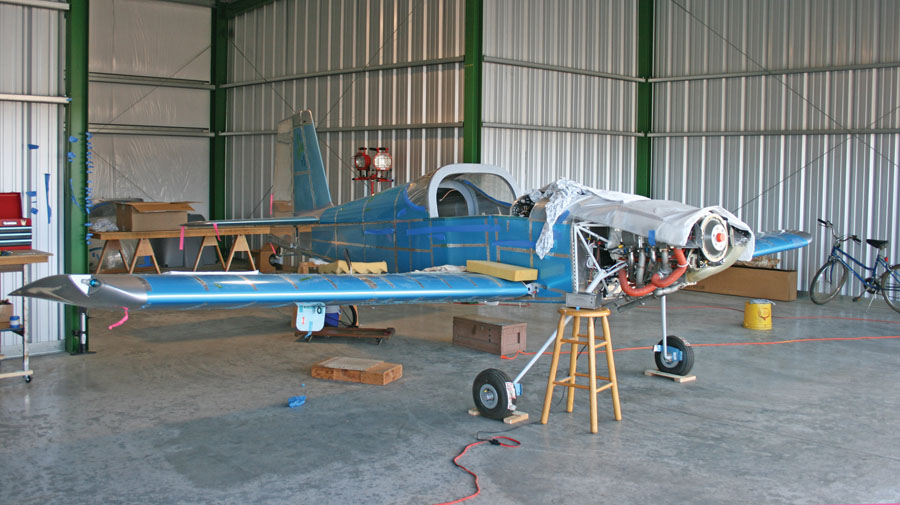
Most of the Van’s series can be built with either tricycle or conventional gear. While the rate of pilot miscontrol is about the same, pilots of the taildragger versions typically have almost twice the total flying hours of the trigear pilots.
The high rate of pilot miscontrol for the Searey might attract your attention, but consider: the Searey is an amphibian. It’s exposed to operating conditions the other aircraft are not. It’s no surprise that water operations are more hazardous—any insurance company will confirm it.
What about the taildragger/trigear divide? The RV-6A is the only example that’ll give us our 50-accident minimum for both the taildragger and trigear configurations. The results there are kind of surprising: The taildragger versions have a lower rate of pilot miscontrol: 43% versus 46%. But the median total time for taildragger RV-6 pilots is almost twice as much: 1500 hours versus 800.
Wrap-Up
In Shakespeare’s Julius Caesar, Cassius points out the folly of blaming events on fate, rather than one’s own actions: “The fault, dear Brutus, is not in our stars, but in ourselves…”
There’s a lot of Brutus in the ranks of homebuilt pilots. They know pilot-related issues are the leading cause of accidents—but exhibit blindness when it comes to their own flying. Accidental stalls are something other pilots do; others may lose directional control on landing, not experienced and cagey pilots like themselves.
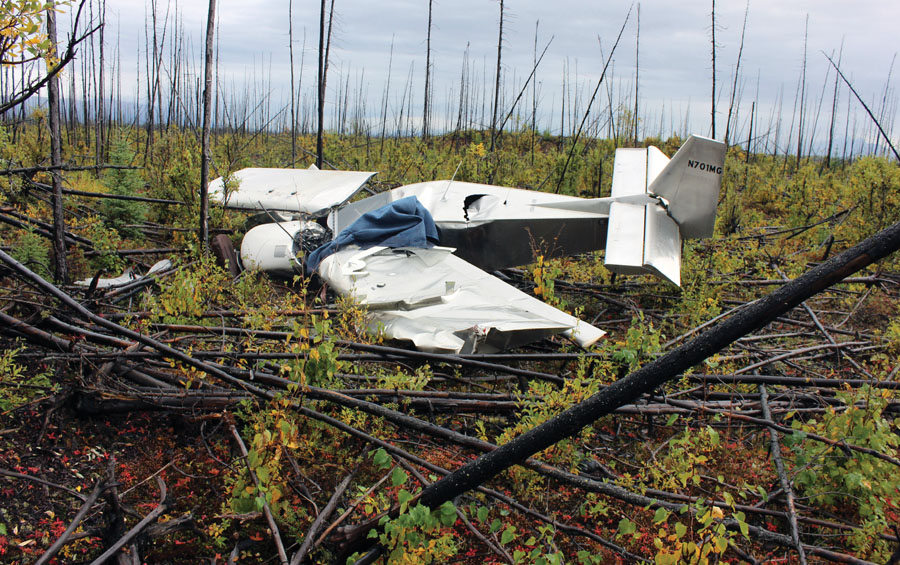
This Zenair stalled when maneuvering at low altitude while trying to locate a bear. (Photo: National Transportation Safety Board)
Yet dozens of pilots each year find their skills inadequate to the task to the extent that an accident occurs. A few may stall out during a forced landing, but the majority are engaged in the everyday exercise of their wings. We let the airspeed decay, we run off the runway during takeoff or landing, we misjudge our approaches, we set the flaps wrong or forget to lower the landing gear.
History shows that even the most-respected pilots have died from ignoring fundamentals. Let’s try to reduce the casualty rate among us less-famous aviators.










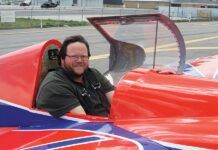

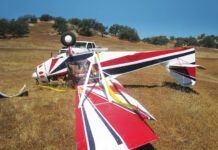
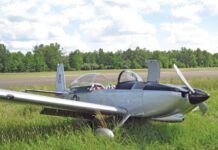
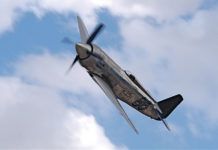
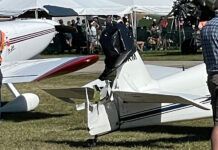
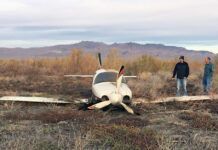
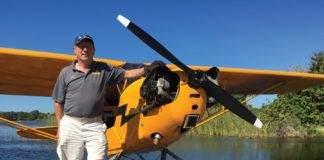
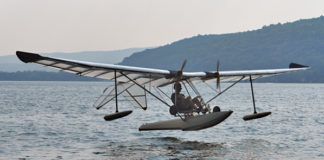
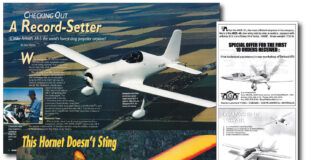

Fuel is lumped into pilot errors. Does this include fuel starvation from building error (debris in tank or incorrect fuel line failures) or other environmental factors (carb icing)?
The fuel category includes fuel exhaustion (no fuel remaining in the aircraft) and fuel starvation (fuel in the aircraft, but pilot did not manage the supply sufficiently to ensure the engine kept running.
Debris in tank or other fuel system issues would be listed under builder/maintainer error. Carb icing is in “other.”